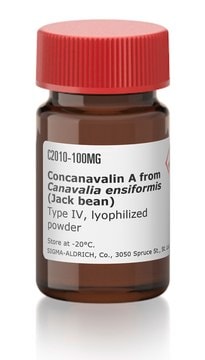C9705
Concanamycin A
≥70% (HPLC), crystals, vacuolar-type v-ATPase inhibitor
Synonim(y):
Folimycin
About This Item
Polecane produkty
product name
Concanamycin A, ≥70% (HPLC)
Poziom jakości
Próba
≥70% (HPLC)
Postać
solid film
spektrum działania antybiotyku
viruses
Tryb działania
enzyme | inhibits
temp. przechowywania
−20°C
ciąg SMILES
CCC1C(O)C(C)C\C(C)=C\C=C\C(OC)C(OC(=O)\C(OC)=C\C(C)=C\C(C)C1O)C(C)C(O)C(C)[C@]2(O)C[C@@H](O[C@H]3C[C@@H](O)[C@H](OC(N)=O)[C@@H](C)O3)[C@H](C)C(O2)\C=C\C
InChI
1S/C46H75NO14/c1-13-16-34-28(7)37(58-38-22-33(48)43(31(10)57-38)60-45(47)53)23-46(54,61-34)30(9)41(51)29(8)42-35(55-11)18-15-17-24(3)19-26(5)39(49)32(14-2)40(50)27(6)20-25(4)21-36(56-12)44(52)59-42/h13,15-18,20-21,26-35,37-43,48-51,54H,14,19,22-23H2,1-12H3,(H2,47,53)/b16-13+,18-15+,24-17+,25-20+,36-21-/t26?,27?,28-,29?,30?,31-,32?,33-,34?,35?,37-,38+,39?,40?,41?,42?,43-,46+/m1/s1
Klucz InChI
DJZCTUVALDDONK-LWLXYWDNSA-N
Szukasz podobnych produktów? Odwiedź Przewodnik dotyczący porównywania produktów
Opis ogólny
Zastosowanie
- as a lysosomal inhibitor in young and old fibroblasts
- as a vacuolar-type H+-ATPase inhibitor in presynaptic vesicles
- as a lysosomal acidification blocker in HepG2 hepatocytes cells
Działania biochem./fizjol.
Hasło ostrzegawcze
Danger
Zwroty wskazujące rodzaj zagrożenia
Zwroty wskazujące środki ostrożności
Klasyfikacja zagrożeń
Acute Tox. 1 Inhalation - Acute Tox. 2 Dermal - Acute Tox. 2 Oral - Eye Irrit. 2
Kod klasy składowania
6.1A - Combustible acute toxic Cat. 1 and 2 / very toxic hazardous materials
Klasa zagrożenia wodnego (WGK)
WGK 3
Temperatura zapłonu (°F)
Not applicable
Temperatura zapłonu (°C)
Not applicable
Środki ochrony indywidualnej
Eyeshields, Faceshields, Gloves, type P2 (EN 143) respirator cartridges
Certyfikaty analizy (CoA)
Poszukaj Certyfikaty analizy (CoA), wpisując numer partii/serii produktów. Numery serii i partii można znaleźć na etykiecie produktu po słowach „seria” lub „partia”.
Masz już ten produkt?
Dokumenty związane z niedawno zakupionymi produktami zostały zamieszczone w Bibliotece dokumentów.
Klienci oglądali również te produkty
Nasz zespół naukowców ma doświadczenie we wszystkich obszarach badań, w tym w naukach przyrodniczych, materiałoznawstwie, syntezie chemicznej, chromatografii, analityce i wielu innych dziedzinach.
Skontaktuj się z zespołem ds. pomocy technicznej












